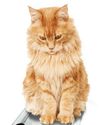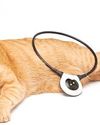
The long-awaited litter has finally arrived and all the kittens appear to have settled in with their mom. It looks like everyone is nursing, however when you check them later on, they are unsettled, crying, and no one is getting a rounded kitten belly from getting fed. You start to wonder if they are getting any food, or maybe the mother cat is having issues nursing her kittens. Maybe she is not able to produce enough milk for her kittens or she has mastitis and is not be able to fully nurse. Dehydration and malnourishment may also cause issues with milk supply. This is a critical time for newborn kittens. “Within a few hours of birth, it is important that kittens receive colostrum, or the first milk, from their mother. Colostrum is rich in antibodies and helps protect the newborns from infection.”1
Weighing In
It is important to track the weight of kittens during the first two to four weeks to ensure that they are getting enough to eat. The best way to track this is to weigh each of them at birth and record the starting amounts, then keep records of each subsequent time the kittens are weighed. Try to weigh at the same time each day. “A new kitten will weigh between 80-170g each and gain about 10-15g every day afterwards. By two weeks old, their weight should be doubled.”2
Sign of Problems
Newborn kittens need to nurse frequently. Verify every couple of hours that they are getting enough to eat. Their mother should also be checked to ensure that she is producing enough normallooking milk.
This story is from the {{IssueName}} edition of {{MagazineName}}.
Start your 7-day Magzter GOLD free trial to access thousands of curated premium stories, and 9,000+ magazines and newspapers.
Already a subscriber ? Sign In
This story is from the {{IssueName}} edition of {{MagazineName}}.
Start your 7-day Magzter GOLD free trial to access thousands of curated premium stories, and 9,000+ magazines and newspapers.
Already a subscriber? Sign In

Life With Patrick
Patrick and Mount Doom

Feline Photographers Part 1
\"Cats never strike a pose that isn't photogenic.\" - Lillian Jackson Braun

The Cat Fancy Alphabet
\"The Cat Fancy Alphabet\" is a new feature in Cat Talk. It highlights various terms and aspects of the cat fancy, educating fanciers new and old about our hobby.

UP CLOSE AND Purr-sonal
If there is one person, or even just a name, that anyone in CFA (Cat Fancier Association) knows, it would have to be Allene Tartaglia. It might be from her involvement with most aspects of the operations of CFA in her position of executive director. Or perhaps from her deep involvement with both the CFA Annual meeting and/or the International Show. Cat Talk thought it was time to learn more about one of the most key people in CFA.

Vision and Hearing Dysfunctions in Senior Cats
Just as people are challenged by having deficiencies with vision and hearing over time, so are senior cats. In senior cats, pet owners may notice their cats are no longer responding to them in the same way; however, it may be difficult to figure out.

Senior Cats and House Soiling
Why is my cat no longer using its litter box? Cat soiling in the house is one of the most talked about issues for pet owners.

Nutrition for Our Senior Cats
From the time they are born, our kittens receive a tremendous amount of care, with diet being at the core of their growth and development.

Fluffy's Sixteen and STILL Plays Like a Kitten!
Enrichment for Senior Cats

Alternative Arthritis Treatments for Cats
Just like humans, cats can experience arthritis. About 90% of cats over the age of 10 years experience osteoarthritis (OA) in at least one joint.1 It is a complex condition involving inflammation and degeneration of one or more joints and is sometimes referred to as degenerative joint disease (DJD). Cats with OA experience pain and inflammation in various joints that interfere with daily activities.

Checklist For What to Look For in Your Club's Next Show Venue
Show Manager To Ring One, Please